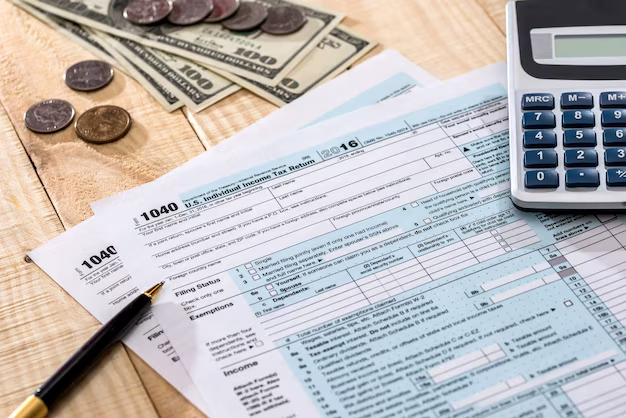Everything You Need to Know About State Income Tax Refunds
Millions of taxpayers eagerly await their tax refunds each year, but the question often arises: Do you get state income tax back? Navigating the intricacies of state taxes can be daunting, but understanding how state income tax refunds work—if you're eligible and how to claim them—makes the process far smoother and can even put money back in your pocket. Let's delve into the essentials of state income tax refunds, explore the factors that might affect your refund eligibility, and answer some frequently asked questions.
🌟 Understanding State Income Tax Refunds
What Is a State Income Tax Refund?
A state income tax refund occurs when the amount of money you've paid your state through withholding, estimated tax payments, and credits exceeds what you owe in state taxes for the year. Simply put, it means you've overpaid your taxes, and the state is returning that extra money to you.
Why Might You Overpay State Taxes?
You might receive a state tax refund due to several reasons:
- Excess Withholding: If too much was withheld from your paychecks throughout the year.
- Estimated Tax Payments: Having made cautious/scaled estimates of taxes that resulted in overpayments.
- Tax Credits: Certain credits applied to your income could increase your refund.
How Do State Income Tax Refunds Differ from Federal Refunds?
While federal and state tax refunds are similar in what they represent—overpayments of taxes—they come from different sources. Federal tax refunds are issued by the IRS, while state tax refunds are distributed by each state's tax authority. Each state has its own regulations, filing methods, and refund timelines.
🧩 Key Factors Affecting State Income Tax Refunds
Different State Tax Systems
Not all states have an income tax, and among those that do, the systems can vary widely:
- Progressive Tax Rates: Some states tax income at different rates depending on income ranges.
- Flat Tax Rates: Other states apply a single rate to all taxable income.
- No Income Tax: A few states, like Texas and Florida, do not impose an income tax.
Tax Deductions and Credits
Various deductions and credits affect both your current tax liability and potential refunds:
- Standard vs. Itemized Deductions: Choosing between these can influence your refund based on specific financial situations.
- State-Specific Credits: These can include credits for education, property taxes, and energy-efficient home improvements.
Changes in Taxable Income
Personal circumstances such as marriage, dependents, income alterations, or even changes in residency can influence the amount of tax you owe or get refunded.
📋 How to File for a State Income Tax Refund
Essential Steps
Accurate Documentation: Ensure all income documentation, such as W-2s and 1099s, are collected. Accuracy in these forms ensures valid calculations of owed, withheld, or refunded amounts.
Choose Your Filing Method: Electronic filing is often quicker and offers confirmation of receipt, but paper filing is still an option for those who prefer it.
Check for Errors: Double-check calculations for accuracy. Errors can delay the issuance of refunds.
Submit by Deadline: Each state has its own deadline, so verify and ensure timely submission to avoid penalties or interest on owed taxes.
Monitoring Refund Status
Most states offer online portals or apps where you can track refund status. Typically, you’ll need:
- Social Security Number (SSN)
- Exact refund amount claimed
🧐 Common Questions About State Income Tax Refunds
Can I Get a Refund If I Didn’t File a Tax Return?
Generally, refunds are only available if you filed a tax return showing an overpayment. However, some states do provide mechanisms for claiming refunds for refundable credits, even if no return is filed.
What If My Refund Is Delayed?
Several factors can delay refunds:
- Errors on the tax return: Incorrect details or miscalculations.
- Identity verification issues: States may need additional information to verify identity.
- Volume of filings: Heavy traffic during peak seasons can slow processing times.
What Happens if I Owe Other Debts to the State?
Refunds might be intercepted or reduced if you owe unpaid debts, such as child support, state loans, or tax bills from a previous year. Check with your state agency for specifics.
🗝️ Key Takeaways
- Identify your state's specific tax system and rules.
- Review income documentation for accuracy and completeness to ensure proper withholding and potential credits.
- File timely and accurately to expedite any potential refund process.
- Follow up on your refund process through your state's portal efficiently.
👇 Quick Summary
- 📄 Document Accuracy: Ensure exact matches with filings, like W-2s and 1099s.
- 📆 Timely Submission: Respect your state’s deadlines.
- 🔍 Monitoring: Utilize your state’s online portal to track your refund.
- ⚠️ Check for Debts: Be aware of any potential state intercepts of your refund.
Understanding state income tax refunds can cushion your finances not just by potentially recovering overpaid taxes but also by learning more about the tax-saving opportunities embedded in state systems. Empower yourself with knowledge and thorough preparation to navigate this yearly financial endeavor confidently.

Related Topics
- Are State Income Tax Refunds Taxable
- Are State Tax Refunds Taxable Income
- Can Business Deductions Reduce Your State Personal Income Tax
- Do I Have To File State Income Tax
- Do You Pay Georgia State Income Tax On Qualified Dividends
- Do You Pay State Income Tax On Qualified Dividends
- Does Al Have State Income Tax
- Does Alabama Have a State Income Tax
- Does Alabama Have State Income Tax
- Does Alaska Have a State Income Tax